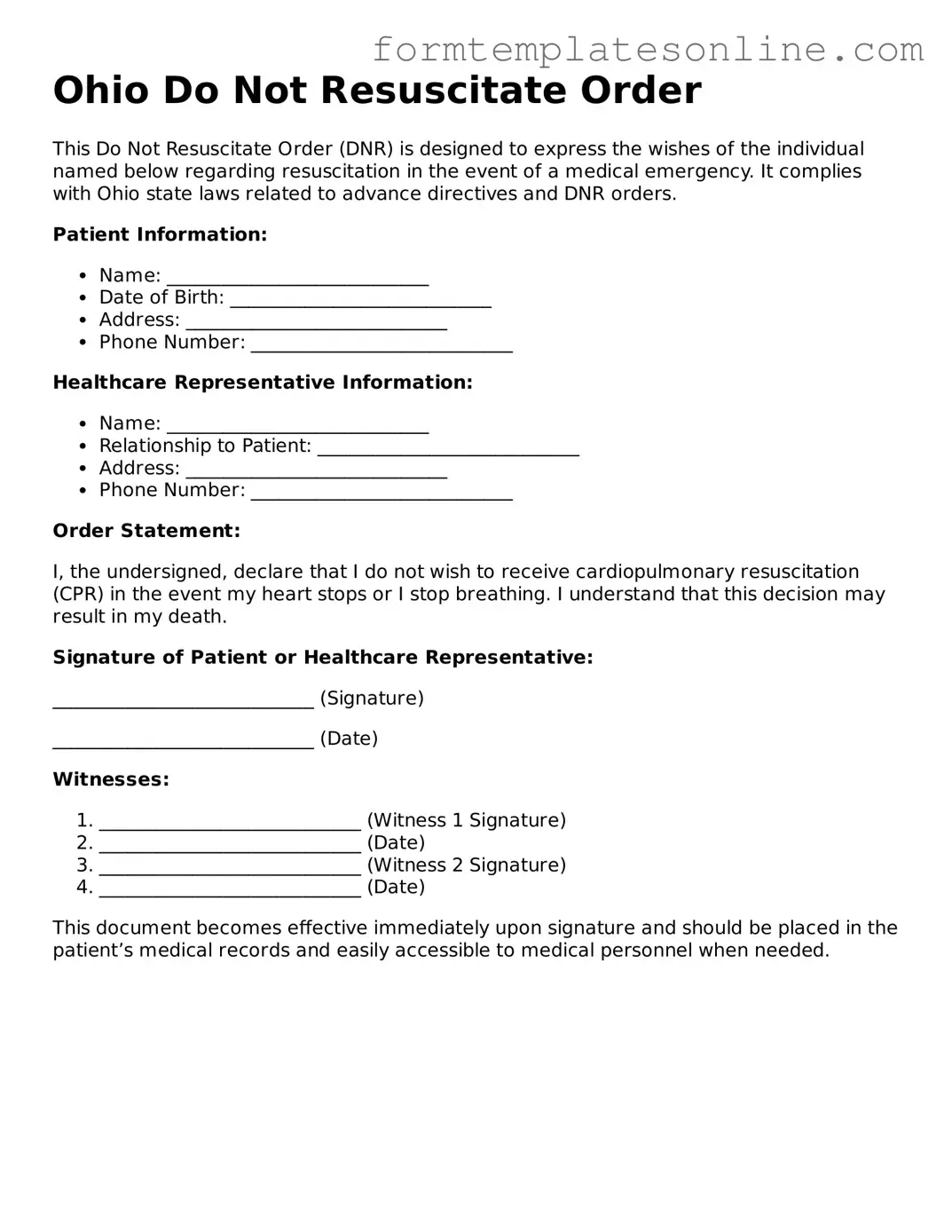What is a Do Not Resuscitate (DNR) Order in Ohio?
A Do Not Resuscitate Order is a medical order that tells healthcare providers not to perform cardiopulmonary resuscitation (CPR) if a person's heart stops beating or if they stop breathing. In Ohio, this order is used to respect the wishes of individuals who do not want to undergo resuscitation efforts in the event of a medical emergency.
Who can request a DNR Order?
In Ohio, a DNR Order can be requested by a patient who is at least 18 years old and has the capacity to make their own healthcare decisions. Additionally, a legal guardian or a person with durable power of attorney for healthcare can also request a DNR on behalf of an individual who is unable to make decisions for themselves.
How is a DNR Order created in Ohio?
A DNR Order must be completed using the official Ohio DNR form. This form needs to be signed by the patient or their authorized representative and a physician. It is important to ensure that the form is filled out correctly and that all required signatures are obtained to make it valid.
Where should the DNR Order be kept?
The completed DNR Order should be kept in a place that is easily accessible to emergency medical personnel. It is advisable for individuals to carry a copy of the DNR Order with them at all times, especially when traveling or going to healthcare facilities. Additionally, a copy should be provided to family members and healthcare providers.
Can a DNR Order be revoked?
Yes, a DNR Order can be revoked at any time by the patient or their authorized representative. To revoke the order, the individual simply needs to destroy the existing DNR form or inform their healthcare provider of the decision to cancel it. It is important to communicate this change clearly to avoid any confusion during a medical emergency.
What happens if a DNR Order is not available during a medical emergency?
If a DNR Order is not available when emergency medical services arrive, healthcare providers are required to perform CPR and other life-saving measures. It is crucial to ensure that the DNR Order is easily accessible to avoid unwanted resuscitation efforts.
Are there any limitations to a DNR Order?
A DNR Order specifically addresses resuscitation efforts in the event of cardiac arrest or respiratory failure. It does not affect other medical treatments or interventions. Patients can still receive comprehensive medical care, including medications, comfort measures, and other supportive treatments, even with a DNR Order in place.
